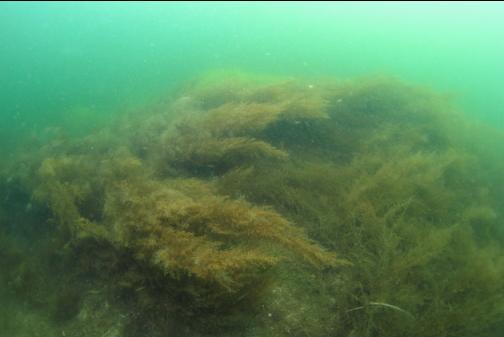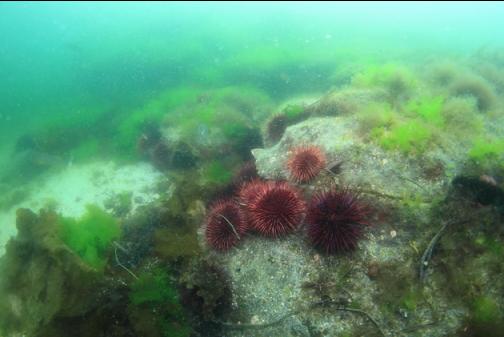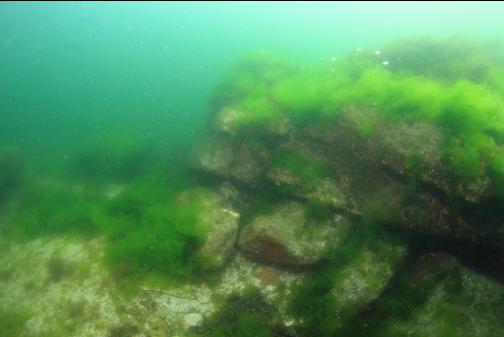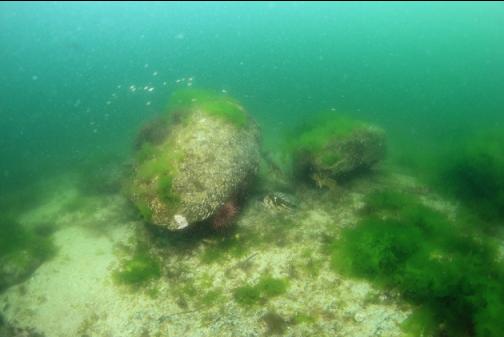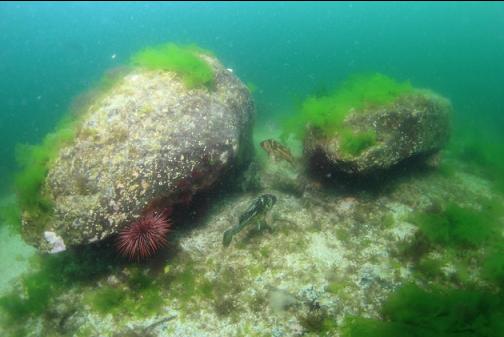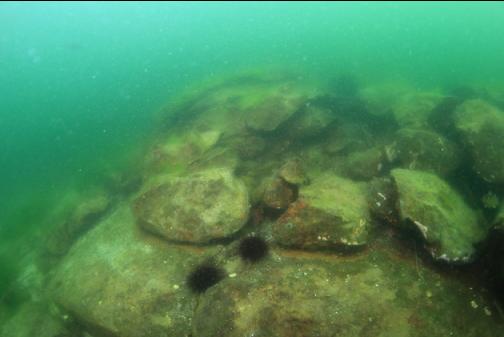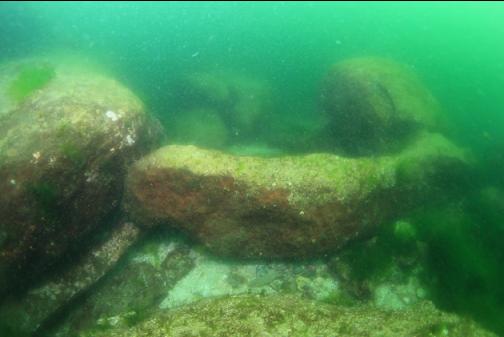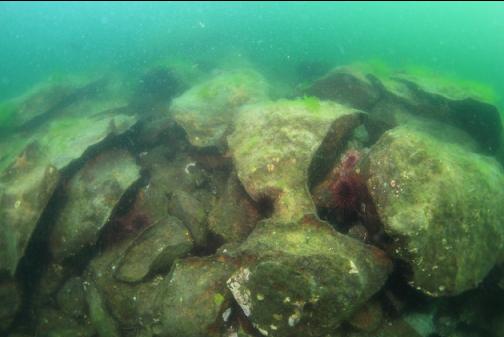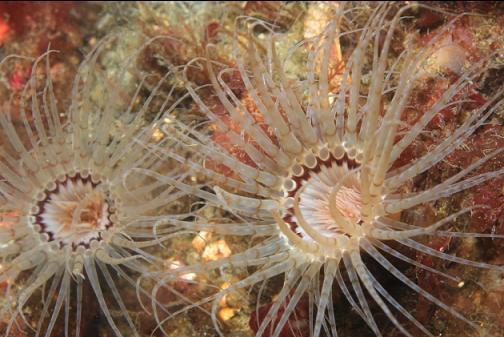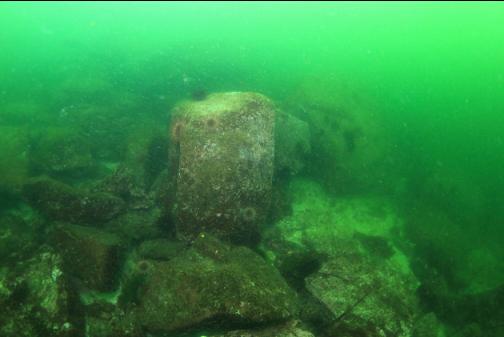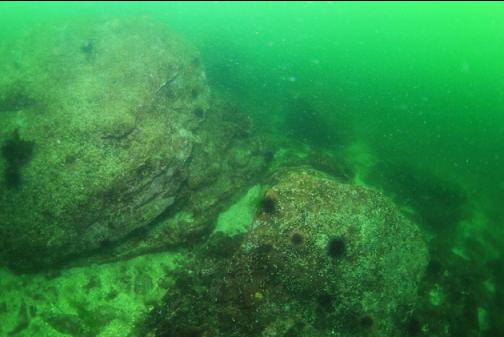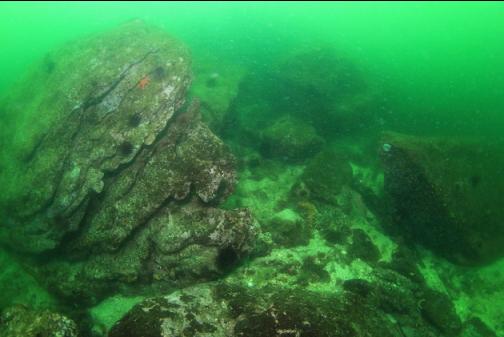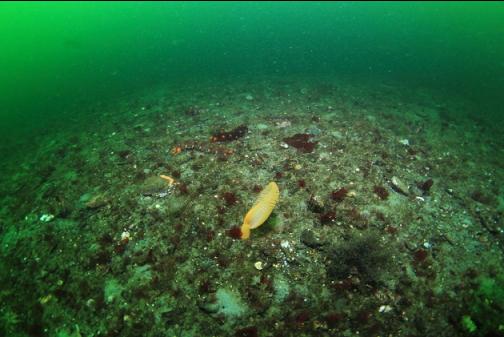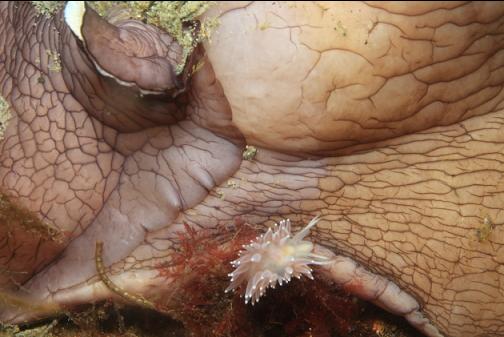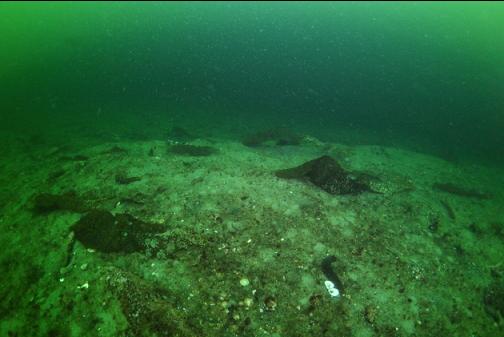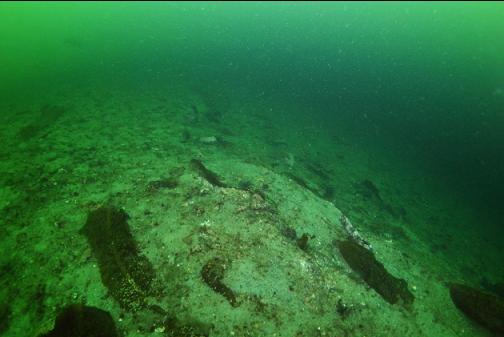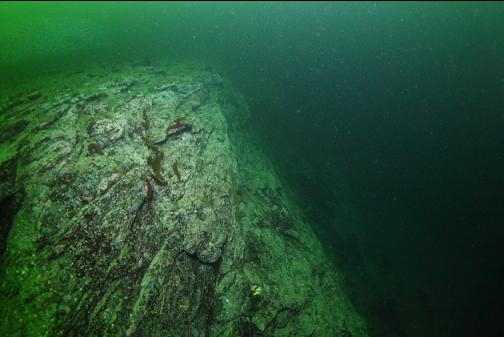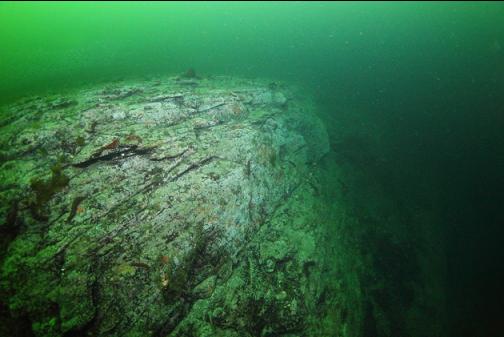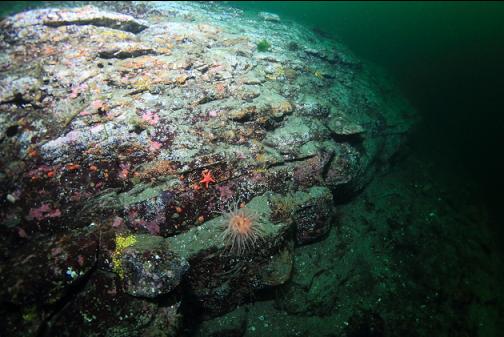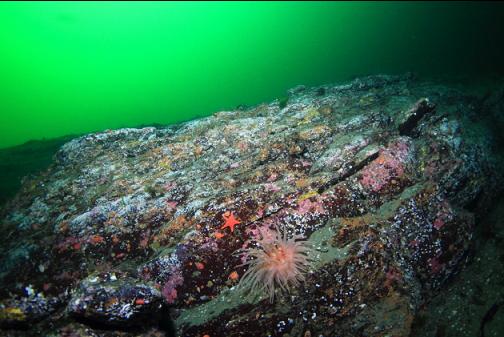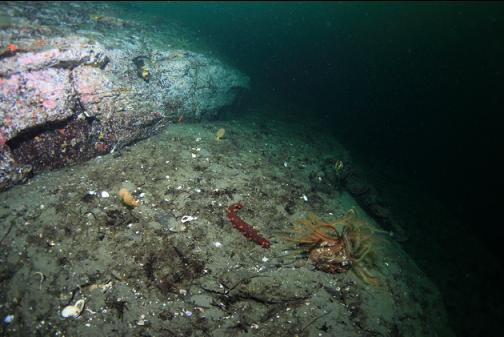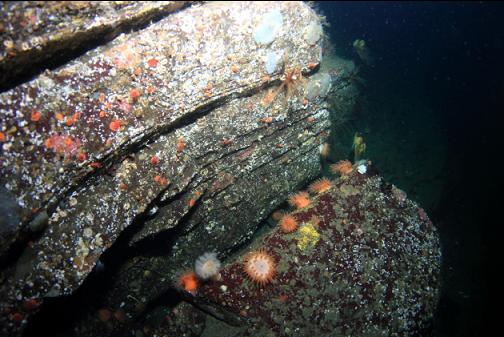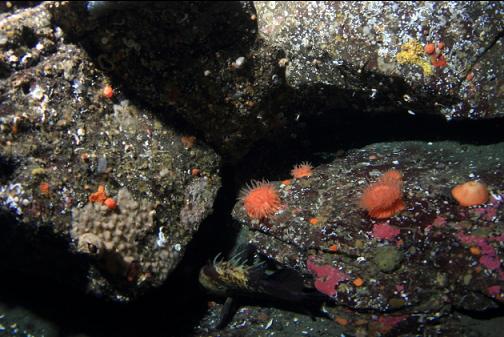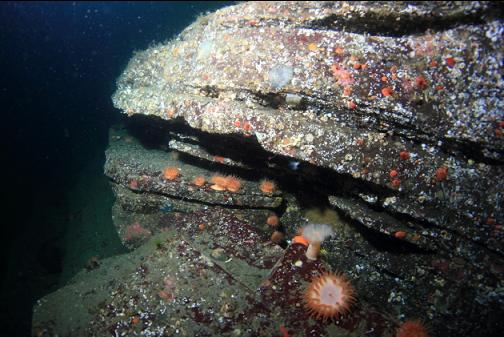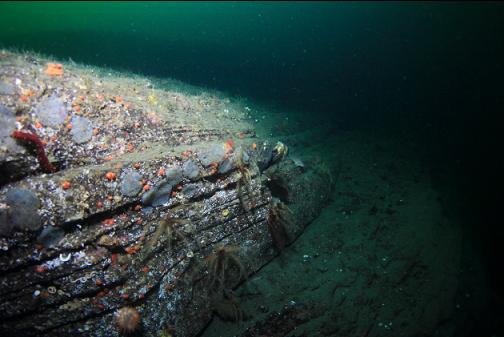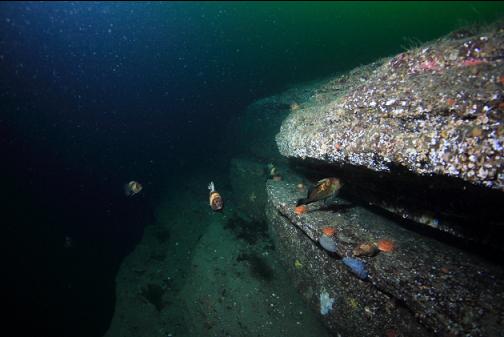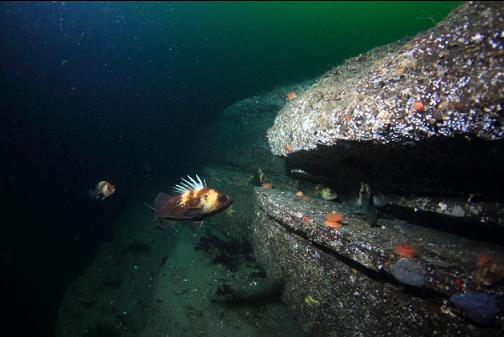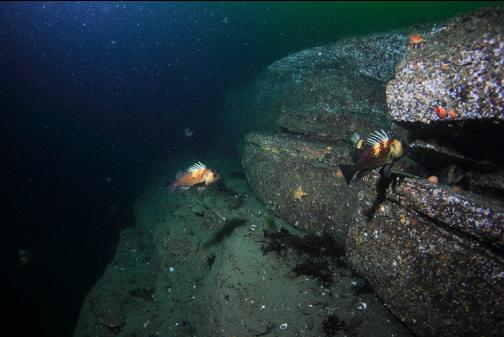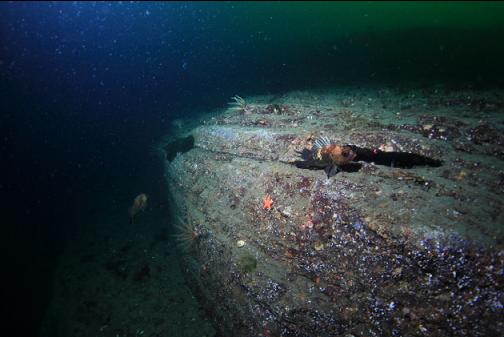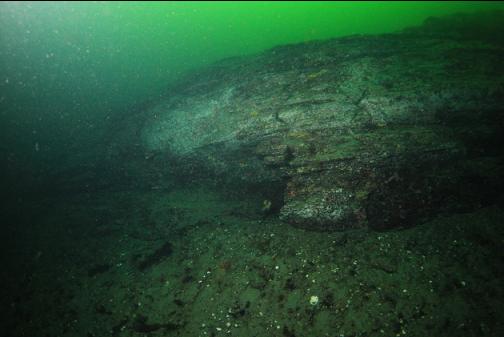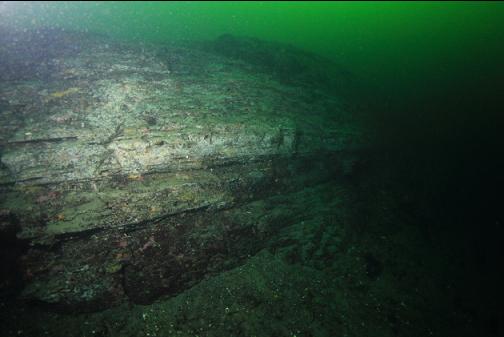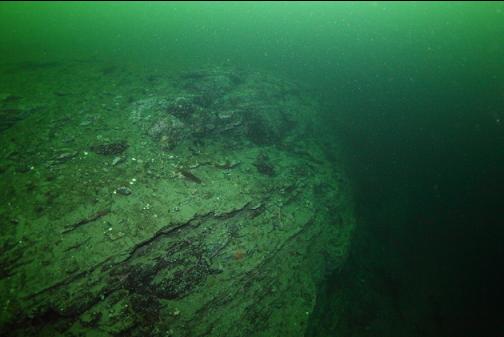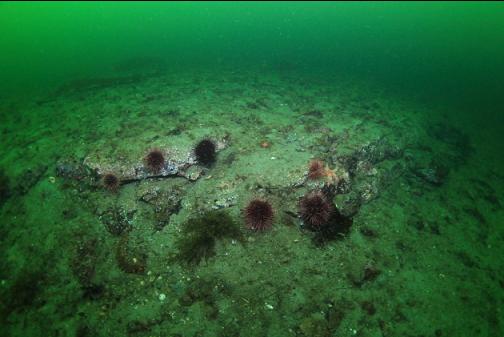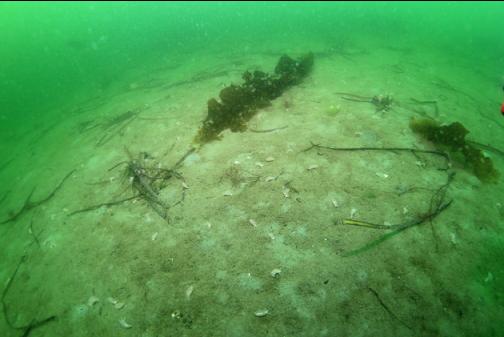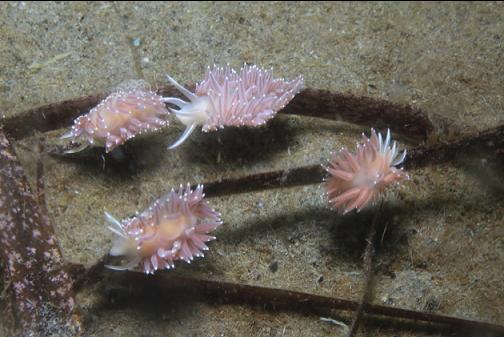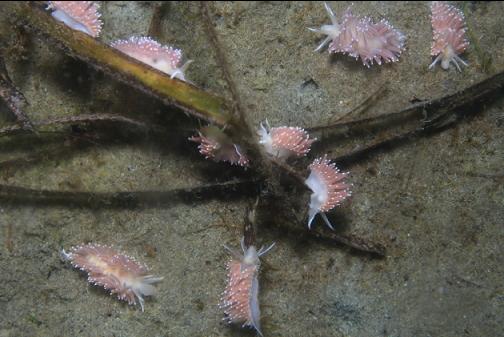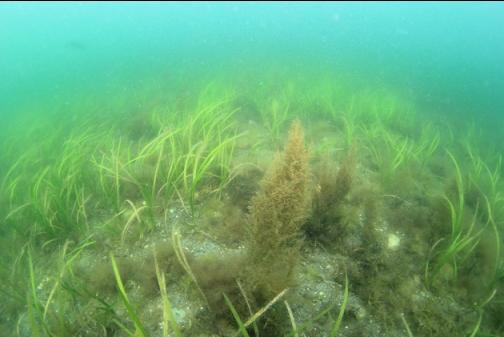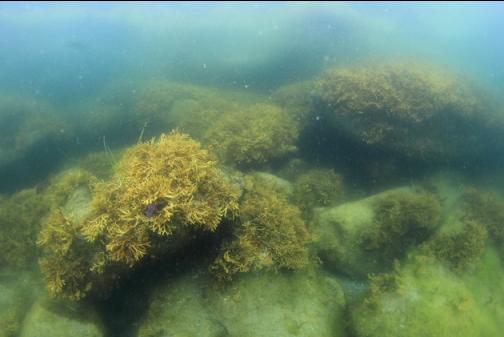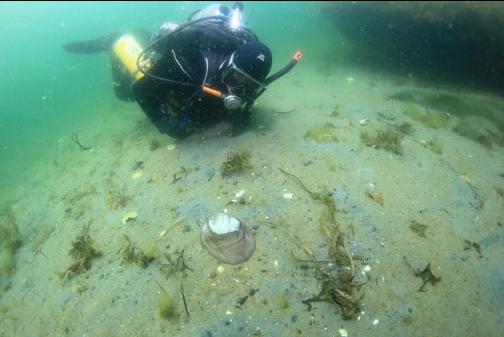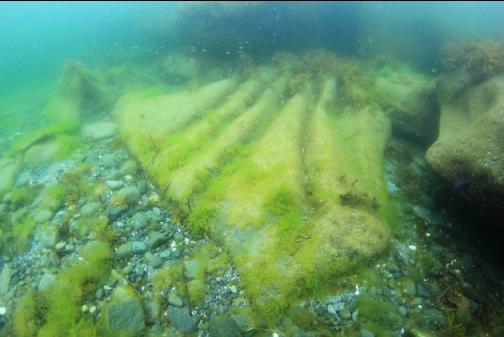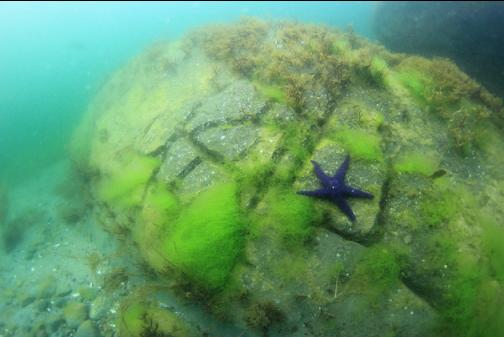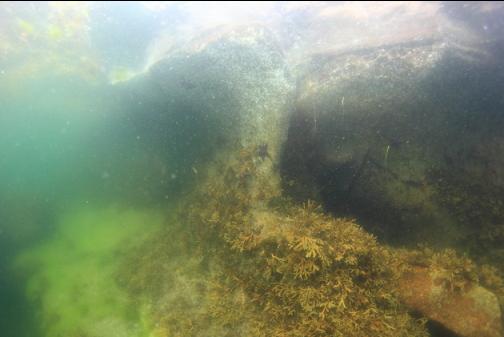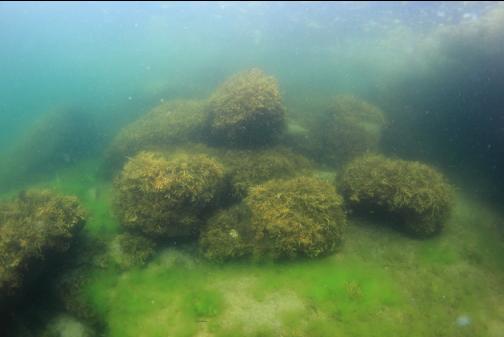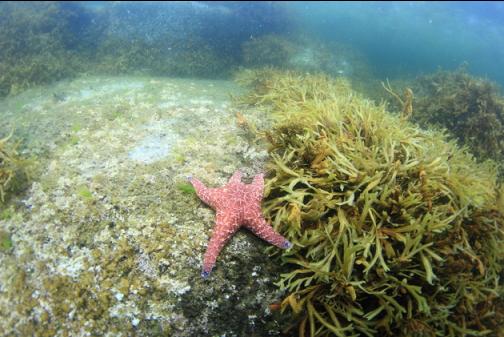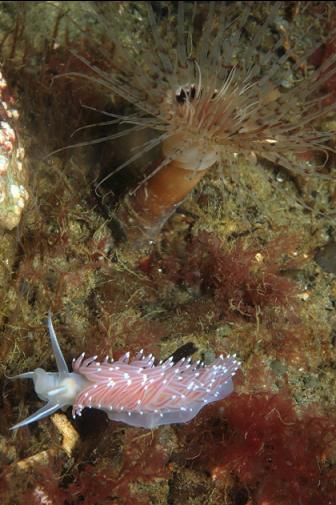
I spent a few days up on Hornby Island and had the time to do one shore dive. The problem with Hornby Island is that the bottom slopes down very gently underwater and is shallow for a long way out around most of the island. This is great for beachgoers (which explains why I found Hornby to be by far the most crowded Gulf Island I've been to), but not so great for shore divers. I found one place South of Ford Cove where there was shore access and the chart showed a steep drop to over 100' deep. Accessing this spot would require a bit of work since there would be a 200-meter walk along the shoreline followed by a similar-length surface-swim out to where the chart showed a shallow reef. The wall was supposed to drop down on the far side of this reef. I showed up here on Aug. 4, 2017. The first problem was finding parking around Ford Cove. The area was packed with cars and I circled around a few times until luckily someone pulled out and left and I had a spot right next to the shoreline. It was so crowded, I was actually being jostled by the crowds walking by as I put on my gear. That was a first for me. The surface photos on this page were taken later in the afternoon when many of the people/cars had left.
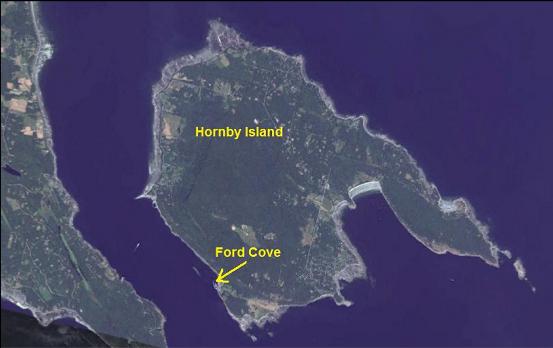
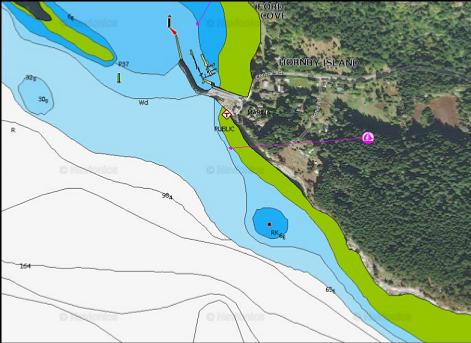
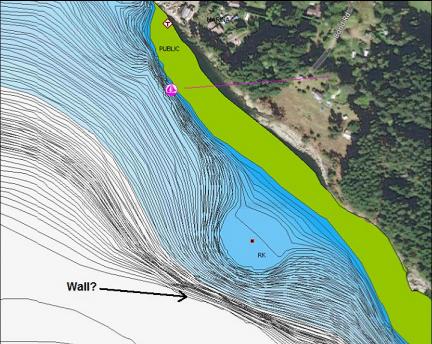
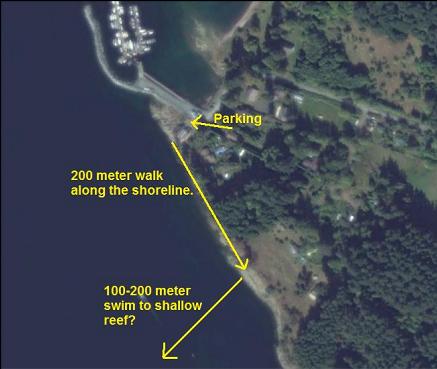
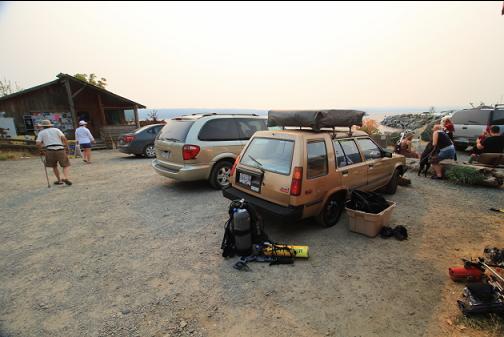
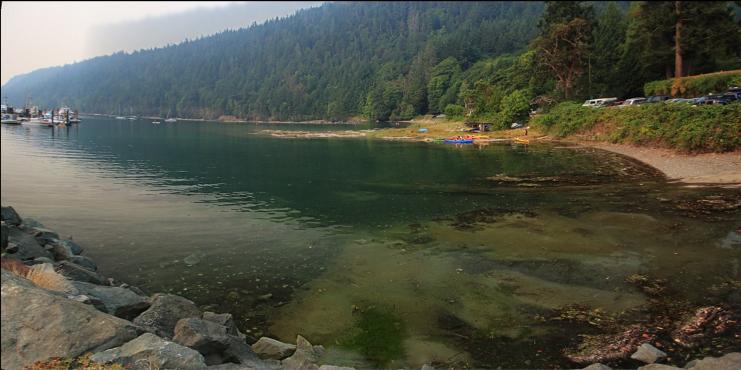
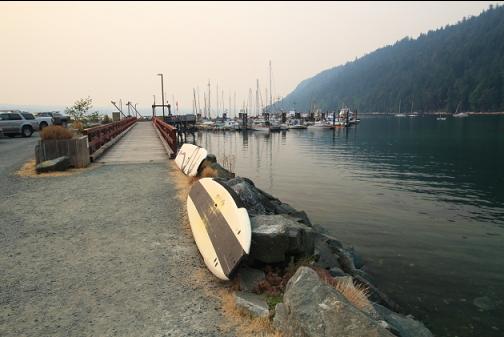
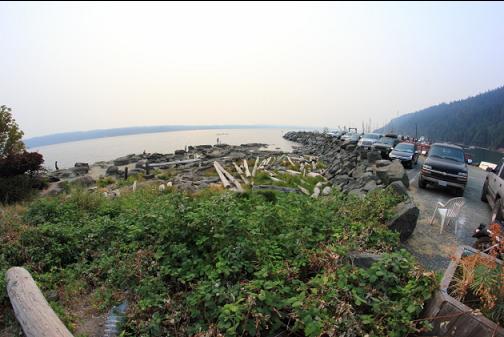
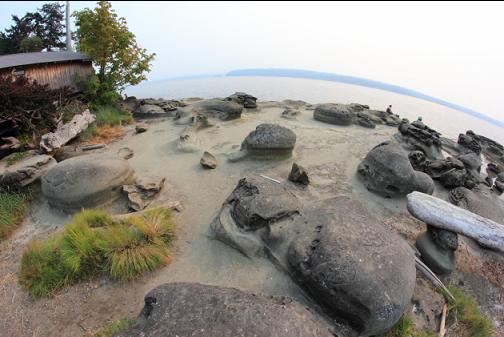
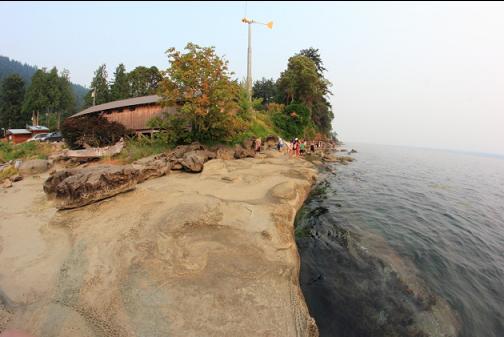
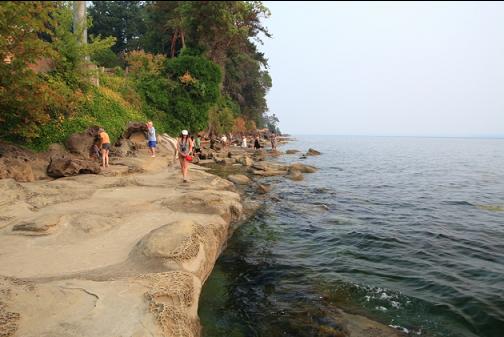
The above pictures were taken after the dive when the tide was high. When I walked out for the dive, the tide was much lower and there were wide sandstone shelves exposed, which allowed me to easily walk along the shoreline as far as I liked. At high tide, this walk might not be possible when wearing all your dive gear. I snorkeled out on the surface towards where the chart showed the shallow reef popping up. I could see the shallow bottom about 10-15' below me for most of the swim. The bottom was a plain of eel grass. Eventually I lost sight of the bottom, but I kept snorkeling out. After awhile I looked back and saw that I was farther from shore than where I expected the reef to be. I descended and there was a sandy bottom about 30' deep. This depth meant that I was farther out than the reef was supposed to be and I had probably swam in a slightly-wrong direction. I swam back up shallower into the eelgrass and sort-of swam around at random looking for the supposed shallow rocky reef. Visibility was around 10-15'.
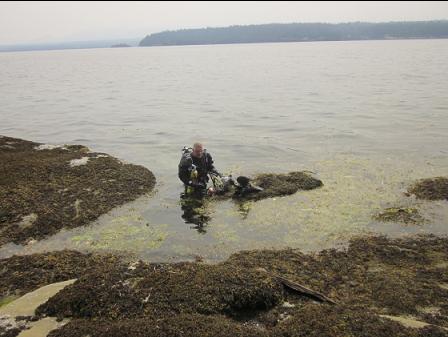
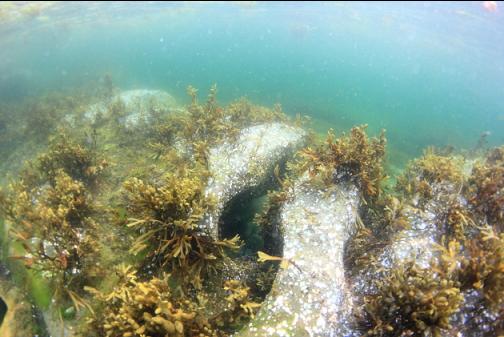
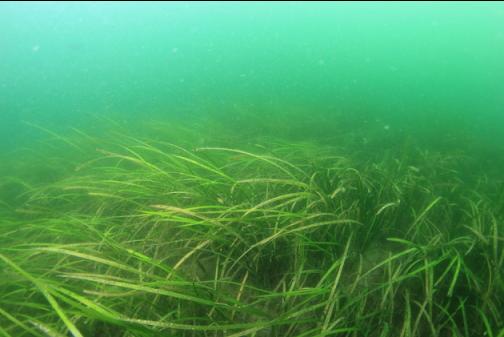
I came across a rocky area (about 15' deep). It was made of small sandstone reefs and boulders. I was surprised by the amount of rockfish (copper) around the rocks. I'm not used to seeing so many this shallow. There were also some small lingcod and kelp greenlings. I'm guessing this is the shallow rocky reef shown on the chart.
I swam down the far side of the rocky area. It ended in sand about 40' deep. The visibility started to improve at this depth as well. I swam out down this sand/gravel slope. I felt about 1/2-knot of current. I didn't bother checking any tide or current tables. I don't know how strong the current can get here.
I saw some rocky ledges in the distance. This was about 60' deep. The bottom soon dropped down in a rock wall. My maximum depth was 115' deep. Visibility was about 50' and, looking down, I'd guess this wall goes down to about 130' deep. I saw very few fish, just a small lingcod and some medium quillback rockfish. From a distance the wall looked mostly bare, but up close there were red burrowing cucumbers, orange tunicates and patches of bluish triton eggs. I didn't see any cloud or boot sponges. There was one small area of the wall with a cluster of swimming anemones. I saw a few crimson anemones and feather stars.
I swam back up the slope towards shore. I missed the shallow rocky area. It must be pretty small. About 30-40' deep, there were nudibranchs scattered over the sandy bottom.
Given the somewhat-difficult access, if I return to Hornby Island I don't think I'd bother diving this spot again.
















